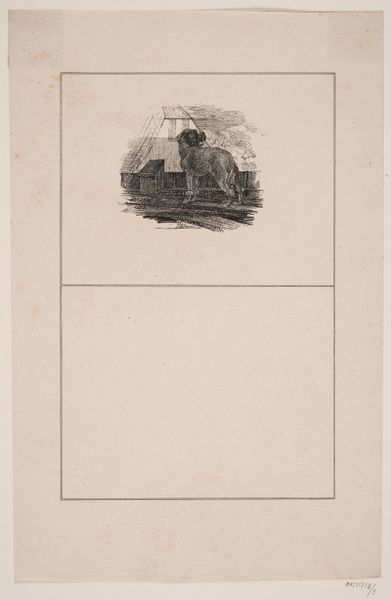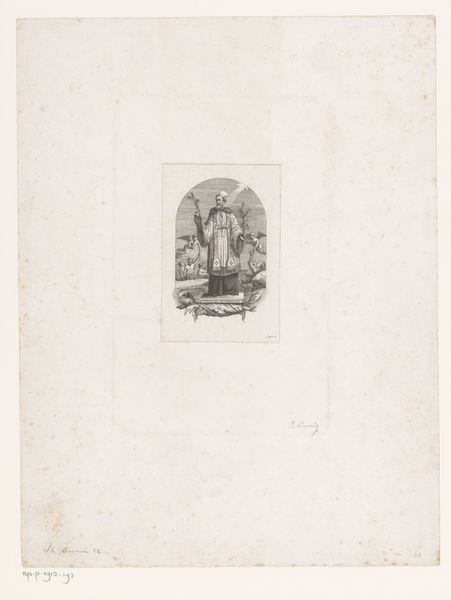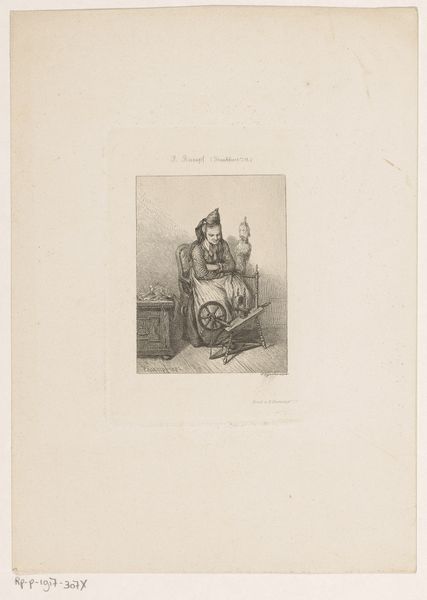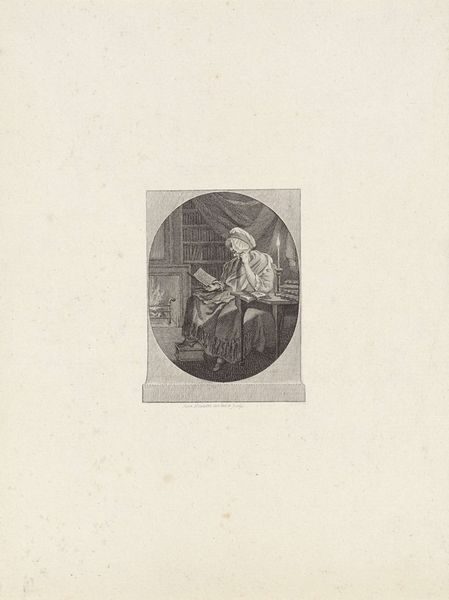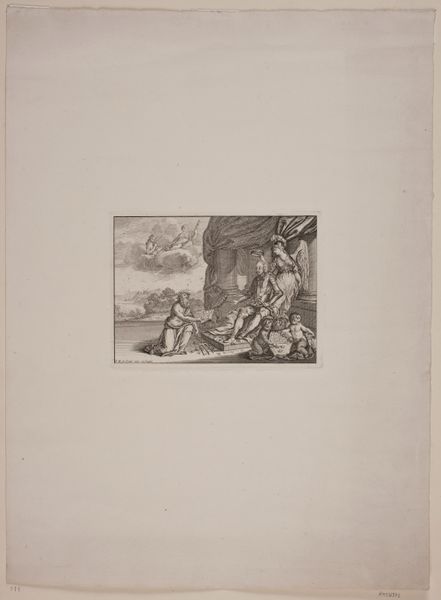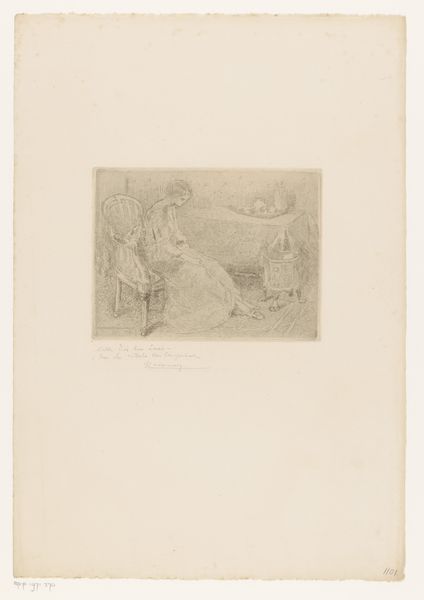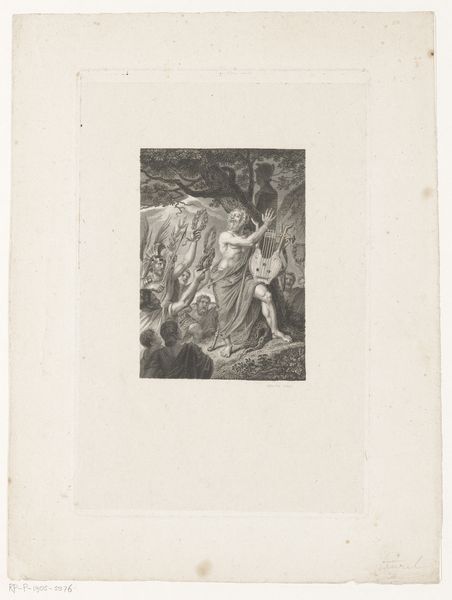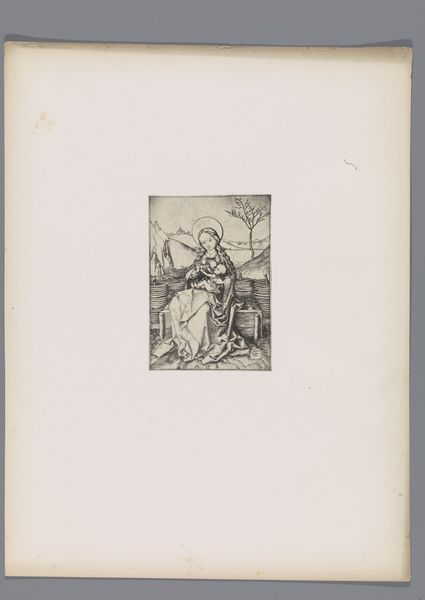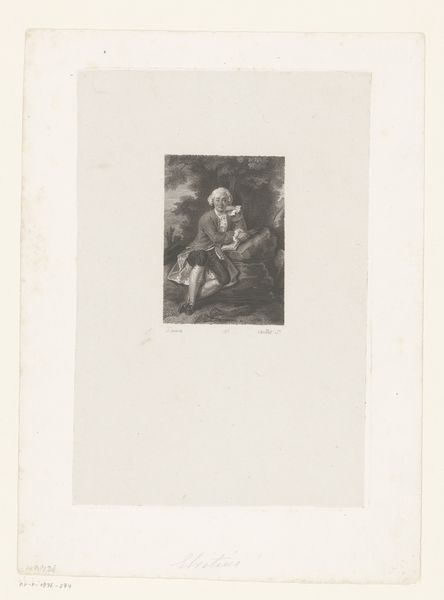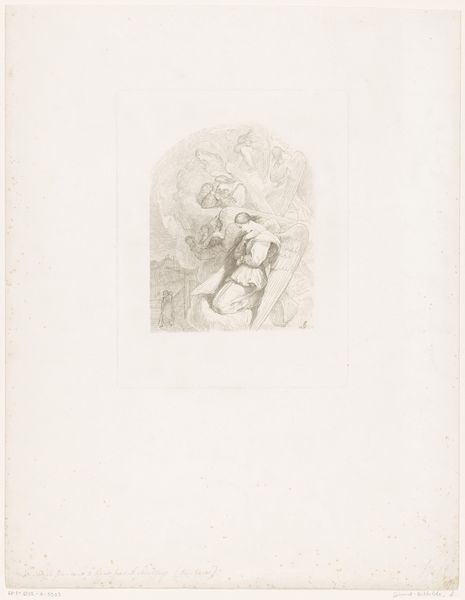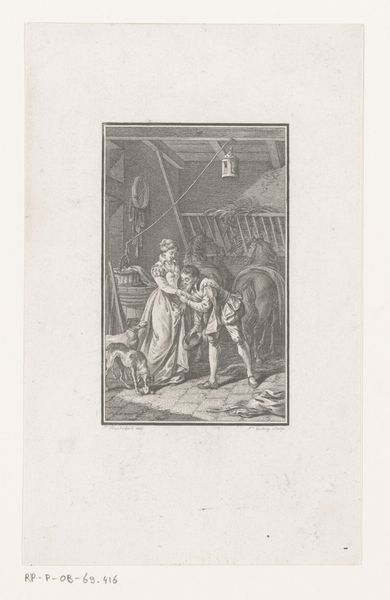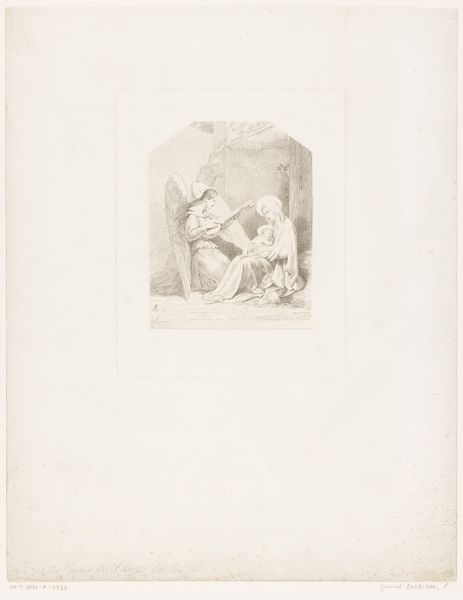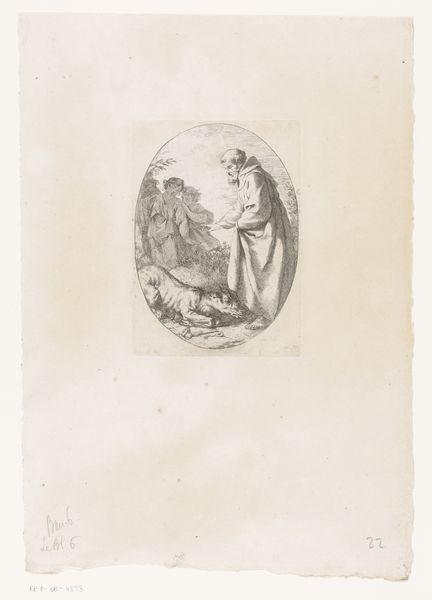
lithograph, print
#
portrait
#
medieval
#
narrative-art
#
lithograph
# print
#
figuration
#
line
#
genre-painting
Dimensions: 259 mm (height) x 173 mm (width) (bladmaal)
Curator: Adolph Kittendorff's lithograph, "Nissen," created in 1845, is part of the collection at the Statens Museum for Kunst. What are your first impressions? Editor: It evokes a sense of quiet domesticity, maybe even hardship. The woman, hunched over, seemingly checking grain or some similar substance from a shallow bowl, emanates a feeling of labor. It seems to tell a story beyond just the depiction of labor, I perceive a starkness of living conditions. Curator: The piece invites exploration of socio-economic history; it also illustrates genre-painting traditions where daily life becomes both subject and message, particularly for understanding public perceptions of work and family at that time. How might it function within such frameworks? Editor: Exactly! Looking at it through a contemporary lens, the image evokes reflections on gendered labor, poverty, and class. Considering that the medieval styles resurfaced heavily during the 1800's, I wonder how much of that is also romanticizing rural labor for a specific viewership. The use of the line technique itself could signify that contrast between modern tastes, while depicting 'ye olden' style work. Curator: Kittendorff employs the starkness you observed in the tight linework to drive the viewer’s gaze toward key thematic and narrative components. Take the lighting and use of shadows around the figure, a spotlight of sorts almost. What is highlighted by this, beyond just a typical illustration? Editor: The heavy shadow casts further the notion of drudgery but there's also some sentimentality implied via the small, watchful dog seated next to a basket - suggesting a symbiotic relationship. Given the period, can we interpret any potential political undertones relating back to gender norms in this presentation of an ordinary domestic moment? The very act of observing, viewing and appreciating. Who exactly had access to appreciate this art in their day? Curator: Those questions of access are important to consider; artworks like "Nissen" become records of societal values. Perhaps examining exhibition histories can give greater insight into the intersectional narratives you've suggested, exploring both the artist’s intention and evolving public reception of the laboring woman within her household and place of labor. Editor: It definitely makes one contemplate the unseen labor shaping societal structures during that time. It speaks quietly, yet persistently, of narratives woven deeply into fabric of daily existence. Curator: Agreed. I appreciate how the intersectional dynamics of gender and economic standing intersect and influence public awareness, both back then and in the museum space.
Comments
No comments
Be the first to comment and join the conversation on the ultimate creative platform.
